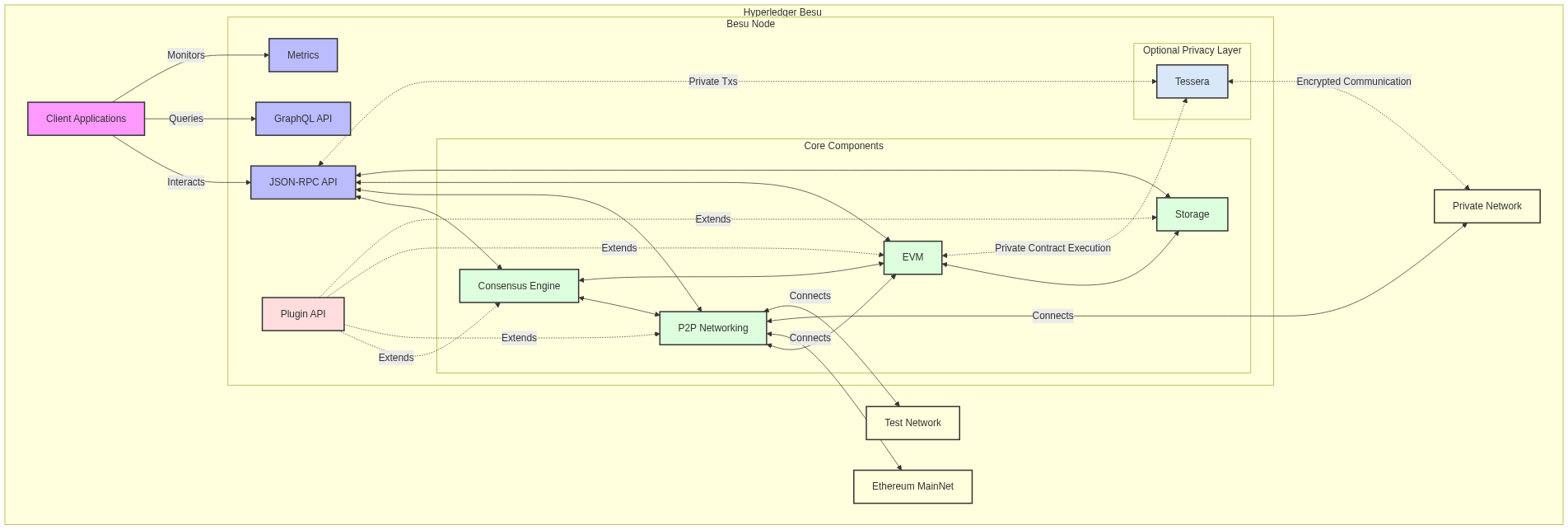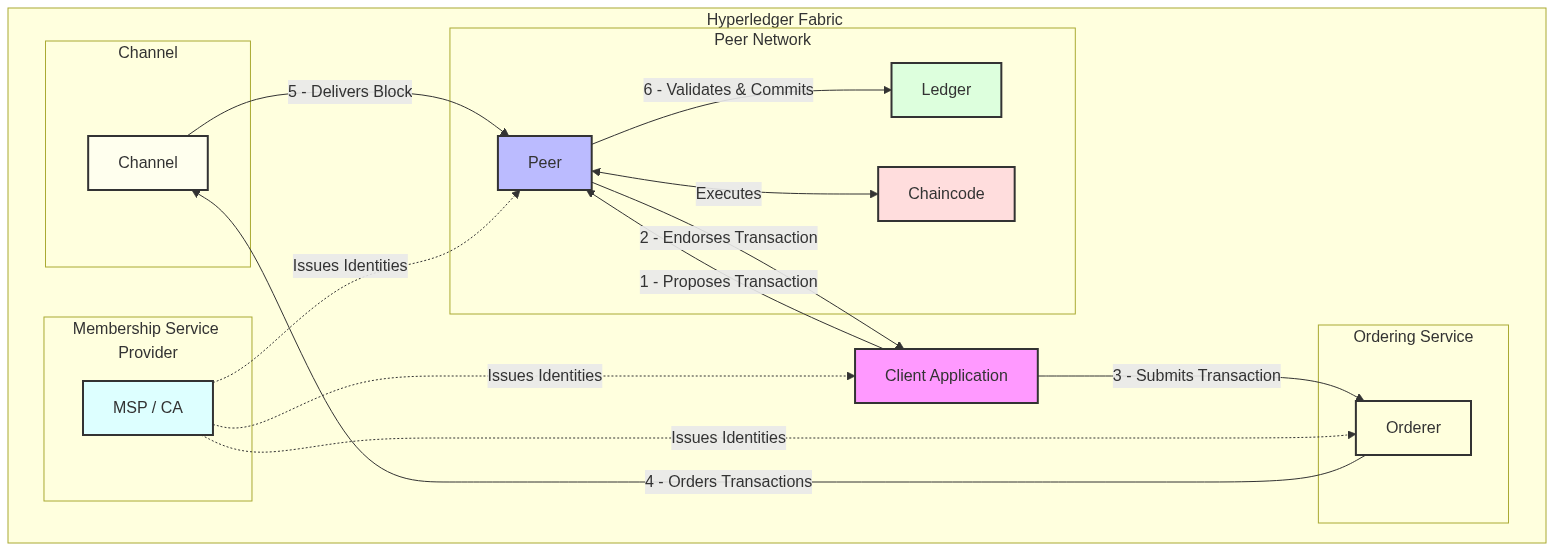Hyperledger Besu vs. Fabric

Introduction
As we move to the end of 2024, the enterprise blockchain landscape continues to evolve, with Hyperledger Besu and Hyperledger Fabric adapting to meet changing market demands. While the initial hype around blockchain has settled, these platforms have found their niches in specific industries and use cases.
Recent developments highlight both progress and challenges:
-
Hyperledger Besu has seen increased adoption in decentralized finance (DeFi) applications, leveraging its Ethereum compatibility. However, it faces competition from layer-2 scaling solutions and alternative Ethereum clients.
-
Hyperledger Fabric remains a go-to for supply chain management, with notable implementations by Walmart and Maersk. Yet, concerns about complexity and steep learning curves persist.
-
Both platforms are addressing scalability and interoperability issues, with Besu exploring rollup technologies and Fabric enhancing its channels architecture.
-
Privacy remains a key focus, with zero-knowledge proofs being integrated into both platforms to meet stringent data protection requirements.
It's worth noting that enterprise blockchain adoption has been slower than initially predicted. A 2023 Gartner report suggests that only 5% of enterprise blockchain projects make it to production, highlighting the need for careful evaluation of use cases.
This blog post will compare Hyperledger Besu and Fabric, examining their current capabilities, limitations, and suitability for different enterprise needs.
Key Takeaways
- Hyperledger Besu is an Ethereum client designed for both public and private permissioned networks.
- Hyperledger Fabric is a modular blockchain framework for developing enterprise-grade applications.
- Both platforms offer unique features catering to different enterprise blockchain needs.
- The choice between Besu and Fabric depends on specific project requirements and use cases.
- Understanding the differences is crucial for organizations looking to implement blockchain solutions.
Understanding Hyperledger Besu and Hyperledger Fabric
Hyperledger Besu
Hyperledger Besu is an open-source Ethereum client developed under the Hyperledger umbrella. It is designed to be enterprise-friendly, catering to both public and private permissioned network use cases. Besu implements the Ethereum protocol and can be run on the Ethereum public network, private networks, and test networks such as Rinkeby, Ropsten, and Görli.
Hyperledger Fabric
Hyperledger Fabric, on the other hand, is a modular blockchain framework that serves as a foundation for developing enterprise-grade applications and solutions. It provides a unique approach to consensus that enables performance at scale while preserving privacy. Fabric is designed to support pluggable implementations of different components and accommodate the complexity and intricacies that exist across the economic ecosystem.
Core Components of Hyperledger Besu and Fabric
Hyperledger Besu Components
- Ethereum Virtual Machine (EVM): Executes smart contracts
- Consensus Mechanisms: Supports multiple algorithms including PoW, PoA, and IBFT 2.0
- P2P Networking: Facilitates communication between nodes
- JSON-RPC API: Allows interaction with the Ethereum network
Hyperledger Fabric Components
- Chaincode: Smart contracts that define the business logic
- Channels: Private subnets of communication between specific network members
- Ordering Service: Ensures the consistency of the blockchain network
- Membership Service Provider (MSP): Manages identities and access control
Blockchain-specific Processes and Mechanisms
Hyperledger Besu
Besu follows the Ethereum protocol, which means it uses:
- Account-based model: Tracks the state of accounts and their balances
- Gas mechanism: For computational resource allocation
- Ethereum-compatible smart contracts: Written in Solidity or Vyper
Hyperledger Fabric
Fabric employs a unique architecture:
- Execute-Order-Validate: Separates transaction execution from ordering and validation
- Endorsement policies: Define which peers need to execute and validate a transaction
- Private Data Collections: Allow a subset of organizations to keep data private from others
Security and Privacy Aspects
Hyperledger Besu
- Supports private transactions using Tessera
- Implements network permissioning for access control
- Utilizes Ethereum's cryptographic security measures
Hyperledger Fabric
- Offers fine-grained access control through channels and private data collections
- Implements identity management through Membership Service Providers (MSPs)
- Supports hardware security modules (HSMs) for key management
Architecture and Structure
Hyperledger Besu
Besu's architecture is closely aligned with the Ethereum protocol:
- Networking Layer: Handles peer discovery and communication
- Transaction Pool: Manages pending transactions
- Consensus Layer: Implements various consensus algorithms
- Execution Layer: Runs the Ethereum Virtual Machine
Hyperledger Fabric
Fabric's modular architecture consists of:
- Peer Network: Maintains the ledger and runs chaincode
- Ordering Service: Orders transactions and creates blocks
- Membership Service: Manages identities and access control
- Gossip Data Dissemination Protocol: Broadcasts ledger updates to peers
Developing and Implementing
Hyperledger Besu
- Supports Ethereum development tools like Truffle and Remix
- Offers JSON-RPC API for integration with applications
- Provides plugins for extending functionality
Hyperledger Fabric
- Uses chaincode for smart contract development (supports Go, Node.js, and Java)
- Offers SDKs for application development in multiple languages
- Provides a modular architecture for customization and extension
Real-World Implementations and Use Cases
Hyperledger Besu
- Financial Services: Tokenization of assets, decentralized finance (DeFi) applications
- Supply Chain: Tracking and tracing products across complex supply chains
- Energy Trading: Peer-to-peer energy trading platforms
Hyperledger Fabric
- Healthcare: Secure sharing of patient data among healthcare providers
- Government: Digital identity management and voting systems
- Insurance: Automated claims processing and fraud detection
Comparison Table: Hyperledger Besu vs Hyperledger Fabric
| Feature | Hyperledger Besu | Hyperledger Fabric |
|---|---|---|
| Blockchain Type | Ethereum-based | Custom blockchain framework |
| Consensus Mechanism | PoW, PoA, IBFT 2.0 | Pluggable (e.g., Raft, Kafka) |
| Smart Contracts | Solidity, Vyper | Go, Node.js, Java |
| Privacy Features | Private Transactions | Channels, Private Data Collections |
| Scalability | Limited by Ethereum protocol | High through channel architecture |
| Tokenization | Native support (ERC standards) | Custom asset management |
| Interoperability | Ethereum ecosystem | Modular design for customization |
| Governance | Ethereum-aligned | Flexible, organization-specific |
| Target Use Cases | Public and private Ethereum networks | Enterprise consortiums, supply chains |
Conclusion
Choosing between Hyperledger Besu and Hyperledger Fabric depends on the specific requirements of your blockchain project:
-
Choose Hyperledger Besu if:
- You need compatibility with the Ethereum ecosystem
- You want to leverage existing Ethereum development tools and skills
- Your use case involves tokenization or interaction with public Ethereum networks
-
Choose Hyperledger Fabric if:
- You require high scalability and performance for enterprise applications
- Privacy and fine-grained access control are critical for your project
- You need a flexible, modular architecture that can be customized to specific industry needs
Ultimately, both platforms offer robust solutions for enterprise blockchain implementation. Hyperledger Besu provides a bridge to the Ethereum world, while Hyperledger Fabric offers a highly customizable framework for building bespoke blockchain solutions. Consider your project's specific requirements, development resources, and long-term goals when making your decision.


